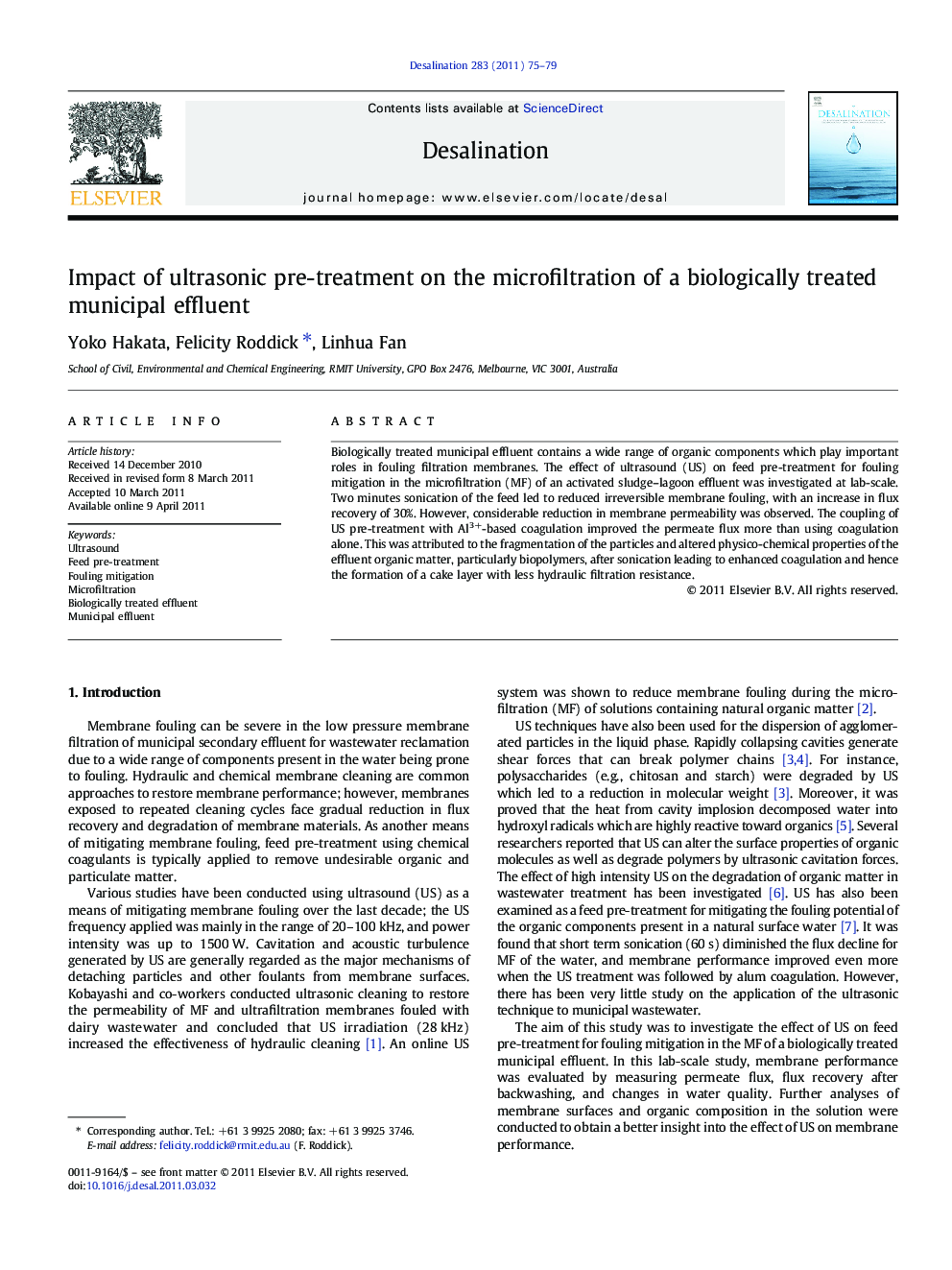| Article ID | Journal | Published Year | Pages | File Type |
|---|---|---|---|---|
| 624415 | Desalination | 2011 | 5 Pages |
Biologically treated municipal effluent contains a wide range of organic components which play important roles in fouling filtration membranes. The effect of ultrasound (US) on feed pre-treatment for fouling mitigation in the microfiltration (MF) of an activated sludge–lagoon effluent was investigated at lab-scale. Two minutes sonication of the feed led to reduced irreversible membrane fouling, with an increase in flux recovery of 30%. However, considerable reduction in membrane permeability was observed. The coupling of US pre-treatment with Al3+-based coagulation improved the permeate flux more than using coagulation alone. This was attributed to the fragmentation of the particles and altered physico-chemical properties of the effluent organic matter, particularly biopolymers, after sonication leading to enhanced coagulation and hence the formation of a cake layer with less hydraulic filtration resistance.
Research highlights► Ultrasonically treated feed exhibited lower irreversible fouling potential. ► The reduced fouling potential was attributed to the modification of biopolymers. ► Ultrasound-assisted coagulation enhanced MF performance markedly.
